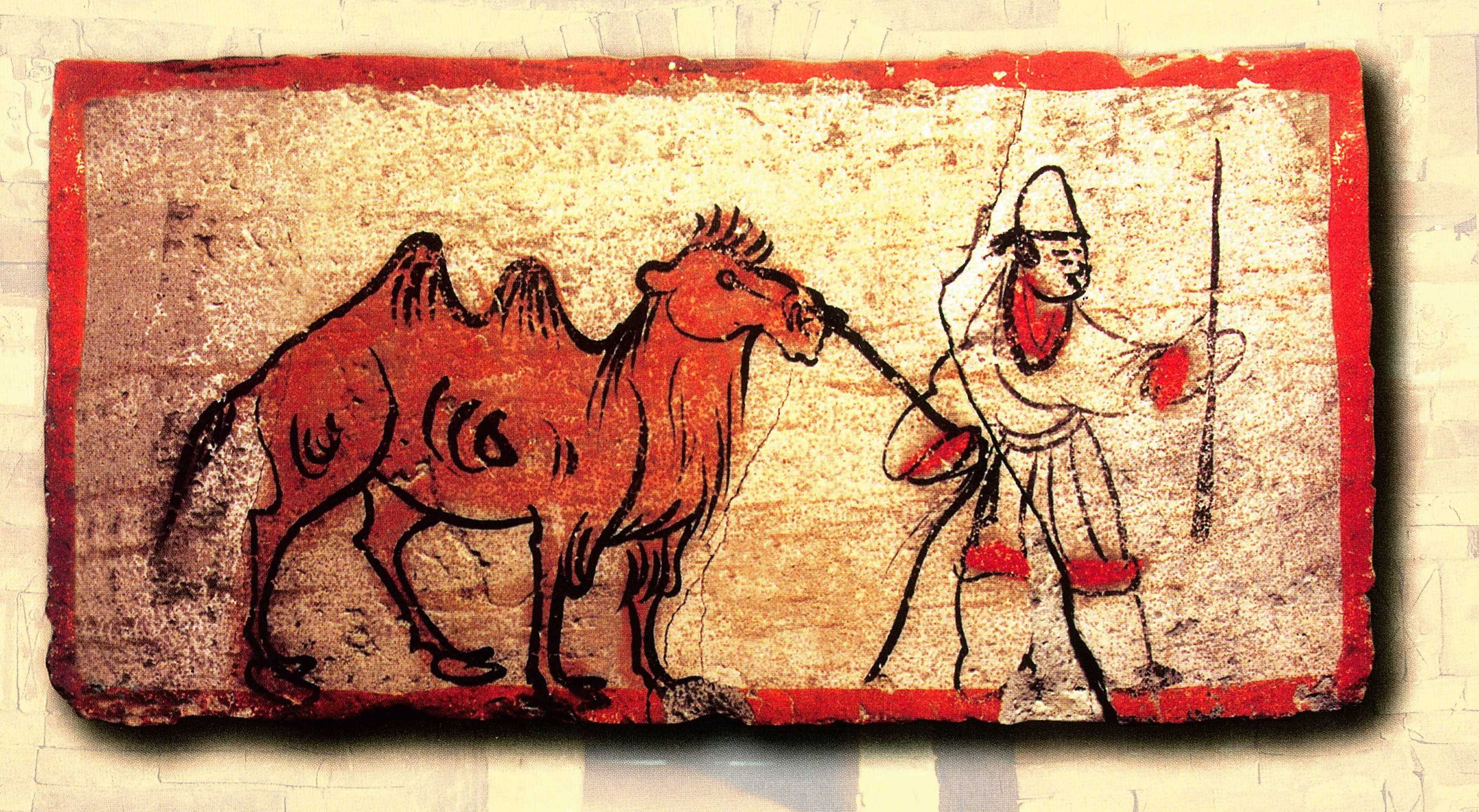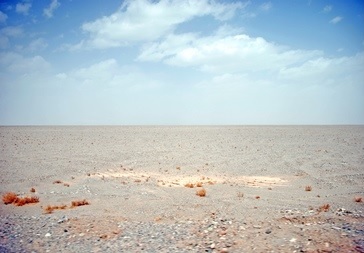
Many of the frescoes have to do with gathering or preparing food. The one depicted below shows a woman and a girl picking mulberries or mulberry leaves. The fruits could have been used to make jams, juice, sauces, desserts or wine; or they could be dried and eaten like raisins. The leaves could have been used to give a sour flavor to food and salads, used to make tea, used as anti-inflammatory medicine, or if of the correct species to feed hungry silk-worms and provide a place for the metamorphosis of next season’s egg-laying moths.
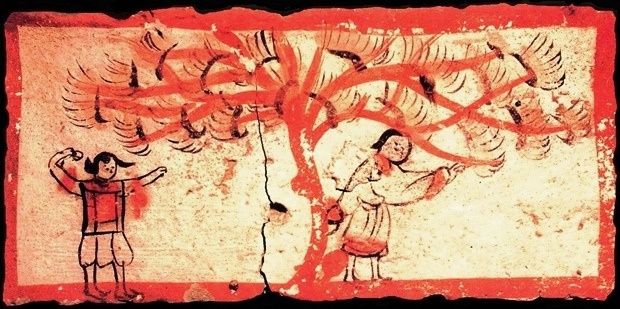
The girl is wearing ribbons and both she and the adult female have short hair which identify them as from the Qiuci ethnic group. The Qiuci were Indo-European settlers in ancient China who spoke an Indo-Iranian dialect, traded on the Silk Road, and eventually became part of the early Uyghur empire. Many historians believe that they arose from the people who first brought Buddhism into China from India and Pakistan. Given the Indo-European roots of the Qiuci, the mulberry leaves could have been used as a flavoring for bread, as is done in some Indian parathas today.
The second fresco presented here show servants preparing a meal. The head cook is picking meat from bones on a board to the right. Possibly recycling meat for another meal from uneaten parts of a roast, or preparing bones for soup. Mutton is hanging from hooks on the ceiling to age, and another cook is stirring a pot to the left. In the foreground and background there appear to be steamer trays lined with dumplings or buns.
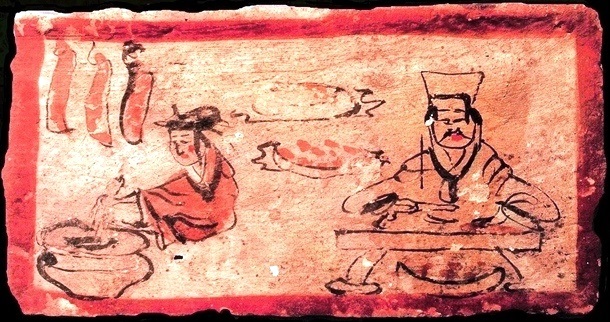
The third fresco shows a maid warming wine. She holds a tray with cups in her right hand and with her left she reaches for a ladle to fill the cups with wine from the warmer. Grape and raisin production and wine-making is an ancient industry in Xinjiang and Gansu and this painting shows the popularity of wine in the Wei and Jin Dynasty.
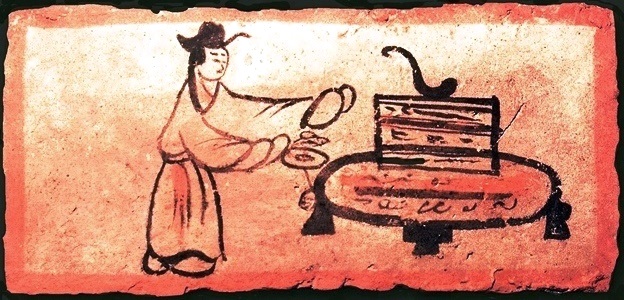
The last painting shows two men having dinner together. The man to the left is the host of the meal and perhaps a noble because he is sitting on a low-bed or a couch. His guest is someone of relatively equal importance because he is depicted at the side of the host and more or less the same size as the host (other frescos denote a marked difference in the size between master or mistress and their servants). The guest proffers a large trident-like skewer with bite-size bits of meat on it – kebabs. Although evidence for kebab eating goes back to Akrotiri, Greece in the 17th Century BCE, and possibly earlier to Ancient Mesopotamia, this fresco gives a solid date range to the food in western China at almost 2000 years ago. Introduced to China by Indo-Europeans coming across the main track of the Northern Silk Road (the Uyghur word is kewap), kebabs are now enjoyed all across China.
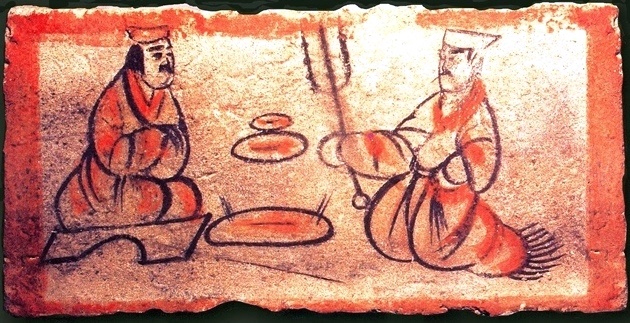
Many other images are captured in the tomb paintings: dancing, raising chickens, a Bactrian camel on a lead, and herding horses. To preserve the paintings, only one or two tombs are open to the public at a time and different tombs are open on a rotating basis to allow for repeat visits. One has to descend almost 30 meters beneath the arid surface to enter the cool, damp rooms of the tombs to view the frescoes, but it is a unique way to experience life in ancient China. Where there is now barren desert, there were rich farms, pastureland, and trading posts teaming with travelers and traders, moving goods, ideas and culture around on the Silk Road. (Words by Laura Kelley; Photos from postcards of the Wei and Jin Tombs by Laura Kelley (photography is not allowed in the tombs.)

